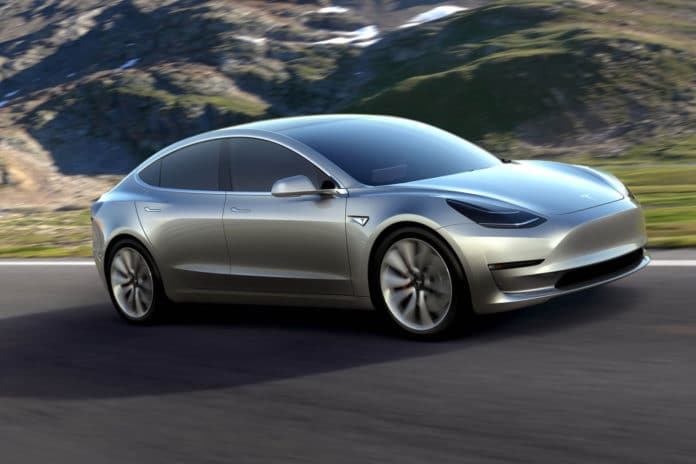One of the biggest problems for electric cars is encouraging adoption among drivers who may be skeptical about refueling. What if you run out of battery and there isn’t a charging station for miles around? Although this isn’t much of an issue for daily commuters who can fill up their electric vehicles (EVs) at home every night, it’s a much bigger deal for long-haul trips.
To help address that problem, Tesla is in talks with a major gas station and convenience store chain that could vastly expand the EV-maker’s network of charging stations – and reduce the likelihood of its customers getting stranded someplace on an hours-long drive.
The chain in question, Sheetz, operates hundreds of retail outlets across six states, mostly in the mid-Atlantic region. It does nearly $7 billion in business every year. It already has eight locations where EV owners can charge their non-Tesla cars, scattered throughout Pennsylvania and North Carolina. And now it could add Tesla’s charging infrastructure to the mix.
“We’ve had discussions with them about putting their chargers in our stores,” confirmed Michael Lorenz, Sheetz’s executive vice president of petroleum supply, in an interview. “We haven’t done anything yet, but we’re continuing those discussions.”
Tesla declined to comment on the negotiations with Sheetz, but acknowledged in a statement that it is actively courting gas stations, hotels and restaurants in its bid to install high-speed electric chargers across the country. Lorenz declined to say how many Sheetz stations may ultimately be outfitted with Tesla chargers.
The potential partnership between Sheetz and Tesla reflects the beginning of a wider awakening in the gas station and convenience store industry. While EVs currently account for less than half a percent of new car sales, that figure is expected to grow; Bloomberg New Energy Finance estimates that within six years electric cars will be as affordable as traditional gasoline-powered vehicles.
By 2040, roughly 1 in 3 new vehicle sales could be an EV, according to the same Bloomberg report. It’s difficult to predict precisely how quickly EVs may catch on; estimates vary widely depending on the source, and the figures are dependent on fluctuating figures such as the price of gasoline.
The change, in other words, will surely take time. But experts have already begun advising some gas stations to consider laying the groundwork now for EV charging. It’s expensive to dig up concrete to install new fuel tanks or other equipment; so as long as that work is occurring, gas stations should consider installing a power conduit so that they can support electric chargers later, said Jeff Lenard, vice president of strategic industry initiatives at the National Association of Convenience Stores (NACS).
Few gas stations currently allow for electric vehicle charging, largely because the technology doesn’t fit with their business model. Many gas stations rise and fall on the sale of convenience-store goods while customers are filling their cars up with fuel. The more cars that pass through the station, the healthier the business. EV chargers undercut that volume-based strategy: Whereas it takes two to three minutes to fill a typical gas tank, it often takes 15 minutes or more to put significant range onto an EV battery. To the convenience store, that extra time represents lost potential revenue.
And with rising fuel efficiency and advances in clean technology, gas stations will soon face a difficult choice: Adapt or die. Federal estimates suggest that by 2035, U.S. drivers could be consuming 20 percent less gasoline than they do today, said John Eichberger, executive director of the NACS-founded Fuels Institute.
“Those kiosks that just sell gallons and smokes are going to have to change,” said Eichberger. “They’re going to lose gallons. Plain and simple, no way around it.”
Eichberger said that because of these changes, the typical gas station of the future will likely look radically different – perhaps more like a restaurant or highway rest stop than a convenience store. Re-envisioning gas stations this way could allow them to sell pricier goods, such as high-end coffee and prepared foods. (In other words, they may look a lot more like a Sheetz or a Wawa.) And that could help cushion these retail outlets’ bottom lines during the period of transition.
Even now, “the stores that feel most like restaurants [tend to] encourage higher rings” on the cash register, said Lenard. The coming decades could see more gas stations adopting that approach.
The extra revenue won’t just help compensate for a decline in gasoline sales, but will be vital for funding the installation of new EV chargers. This business model, in which customers stay longer and spend more, suggests it’s no accident that Tesla has made restaurants and resorts an early pillar in its charging strategy. If gas stations move in this direction, too, so much the better for Elon Musk.
Today, retailers who have installed EV chargers have typically done so because the installer fronts the hefty cost. But that arrangement may not last forever. What is a choice of convenience for gas stations today could well become an imperative as electric car adoption increases. And by then, installers may no longer be as eager to subsidize the work of retrofitting gas stations, analysts say.
Some gas station operators say getting a good deal on the charging equipment helped motivate them to become early adopters. Tristen Griffith is the president of the Sacramento 49er Travel Plaza, a truck stop that spent the past year researching EV technology. Recently, Griffith made the decision to let a third-party company, NRG Energy, install a set of EV chargers on her commercial property. She’s paying practically nothing for it, she said.
“We want to sell gas and diesel, but our future is electric vehicles, and trucks are going to be driverless,” said Griffith. “Times are changing, and we need to keep up with that change as well, if we want to be smart and stay ahead of the game.”






